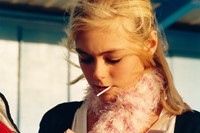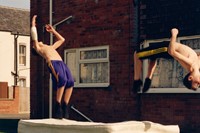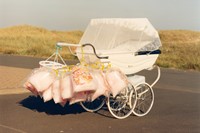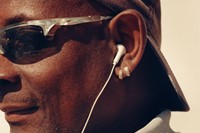One of Jamie Hawkesworth’s most well-known photographs was taken on Unst, Britain’s northernmost point. The landscape – which happens to be the inspiration behind Robert Louis Stevenson’s Treasure Island – is known for being jagged and treacherous, pummeled by centuries of thrashing waves and sharp winds. “I took a train, and then a ferry, and then a bus, and then another bus, and then another ferry, to get there,” Hawkesworth remembers. As usual, the Ipswich-born photographer had “absolutely no plan” for his trip: the goal was to reach the island’s tip, spend the night in a converted RAF base, and see what images he could capture. As the rain grew increasingly violent, he thought about turning back – until he came across a farmer’s fete at a weather-beaten Community Centre. “I saw this girl who had come last in the local pony competition. She had this amazing face, so I asked her parents to take her picture.” The resulting shot, one of the leads in his new British Isles show, stands out amongst the surrounding sun-drenched images: a young girl in a pink tracksuit with sodden, windswept hair and a dejected gaze.
It’s fitting that, the day I speak to Hawkesworth, sheets of rain are smashing against my window. It’s a summer afternoon in London, the day after a general election, and Britain – its uncertain future and restless, metamorphic identity – has been the national focal point for the last few weeks. Hawkesworth’s project The British Isles, a collection of images taken around the country from 2007 to 2020, is set to open at London’s Huxley-Parlour, presenting a dream-like carousel of the moments that led us to this point. Often, these are portraits of people caught in the mundane reverie of their day-to-day lives, from paint-flecked decorators and phone-scrolling students to Covid’s frontline workers. “I was never like, ‘Right, I’m going to try and talk about what it’s like to be in Britain now’,” Hawkesworth admits. “I just picked places I’d never been before and went there just to see what they looked like.” Having discovered photography “late” at 21, after a brief spell studying forensic science at the University of Central Lancashire, he felt compelled to make up for lost time. “I truly felt guilty if I wasn’t out taking pictures. I’d found something I loved to do, I was just going to do it,” he says. “Truly, at the heart of it, it’s just a sense of wandering.”

This sense of instinct-driven wandering has come to define Hawkesworth’s work. He admits to doing the “most minimal amount of research you could ever do” while travelling for personal projects, relying instead on gut feelings and overheard conversations to dictate his next move. His general rules are not to get too in his own head, to keep things simple, and to surrender control. In his fashion photography, this translates to scrapping elaborate studio set-ups and relying exclusively on natural light (“when you’re at the mercy of daylight, you can shape it a little bit, but it tends to be what it is”). It also means rejecting digital photography entirely. “If analogue photography disappears, I would actually just stop taking pictures,” he says. “With analogue photography, it’s just so pure because you can’t see anything. You can’t overanalyze, and you can make lots of mistakes because you just can’t see.” This “looseness” leaves room for surprises, as well as honesty. “Even on commercial work, no one sees anything because I don’t shoot Polaroid either. So everybody’s truly just looking at what’s happening in front of them.”
There are obviously challenges that come with this kind of approach. While shooting The British Isles, Hawkesworth would often find himself going on long trips with nothing to show for it – the photos from his contact sheets would be uninspiring or not quite right. He also had to battle with his own intense shyness to take them in the first place. “I used to do this thing where, if I had to make a phone call, I was so shy that I would have to practice before making the call, which is so much worse,” he says, laughing. “But every single time, going up to a stranger is still incredibly nerve-wracking, and you never know what they’re going to say. It’s extremely awkward. But I learned very quickly, if you just enjoy the awkwardness and don’t try and change anything, you’re going to get some sense of honesty come through somewhere.”
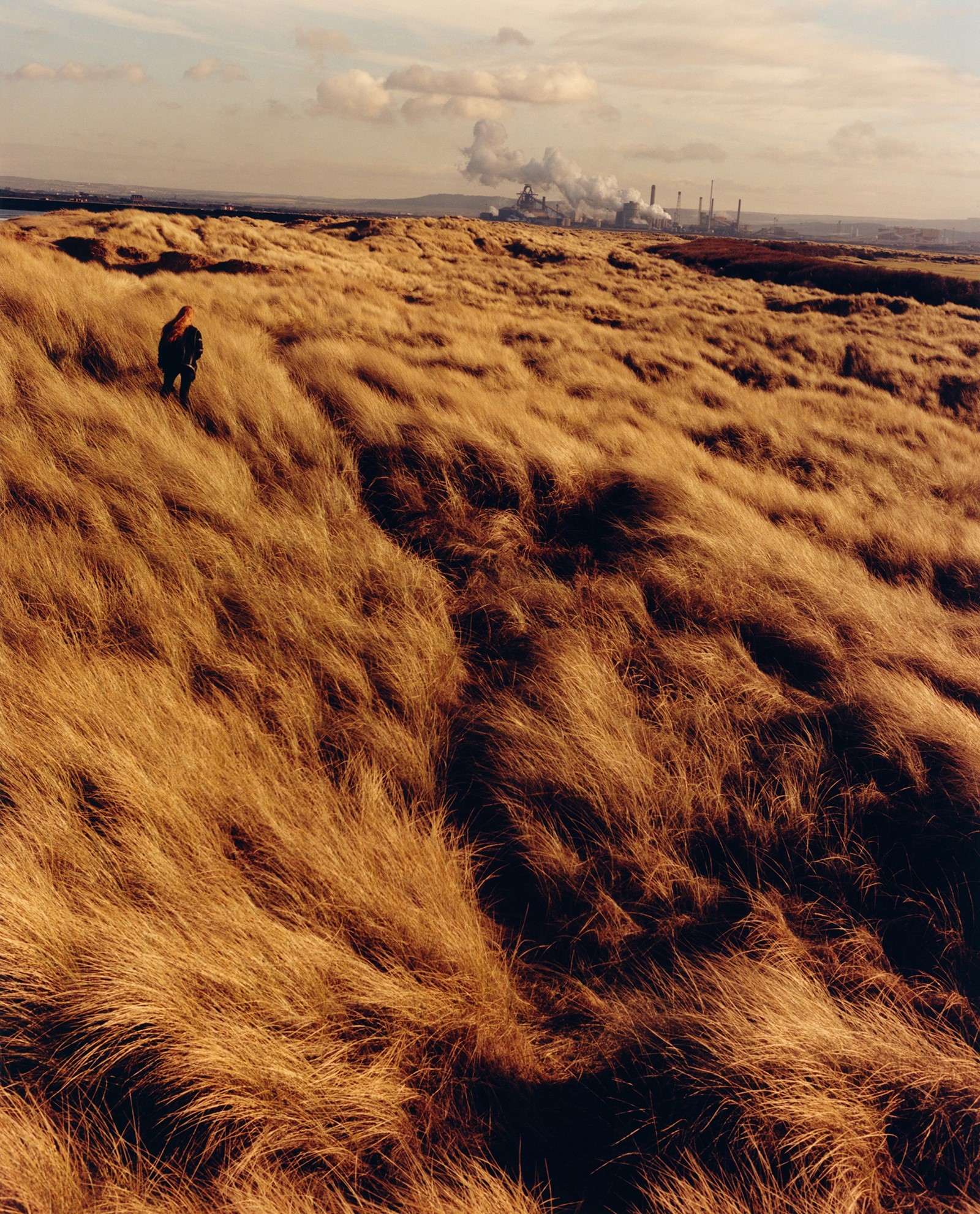
The British Isles ‘project’ officially ended in 2020, and Hawkesworth admits that – for now – his urge to travel the UK has been satiated (in “20 years”, once he’s forgotten what Hartlepool is like, the desire might return). These days, his attention is further afield. When we speak, he’s just returned from Cape Cod, where he went on a whim to see where Joel Meyerowitz made his Cape Light series. He’s also experimenting with directing, having just wrapped a short film about his grandad’s stint as a messenger boy in the Blitz. “I was spending so much time alone in my darkroom, I thought it’d be nice to start collaborating with people a little more on longer projects.”
Growing older, he adds, has been a key to changing his relationship with his work. Many images in The British Isles were left to gather dust, becoming more enchanted as the years flickered past. “I think, ultimately, you change,” he says. “Things become more romantic somehow. The idea that I got a train and had a Snickers bar and a cup of tea and walked around for two months, and now I’ve got to pay an electric bill.” There’s also the eternal nature of his subjects, and the fleeting intimacy of each lost connection. With portraits, “You’re never going to see that person ever again probably, so it’s quite amazing: that human being existed, and now you don’t know where they are.”
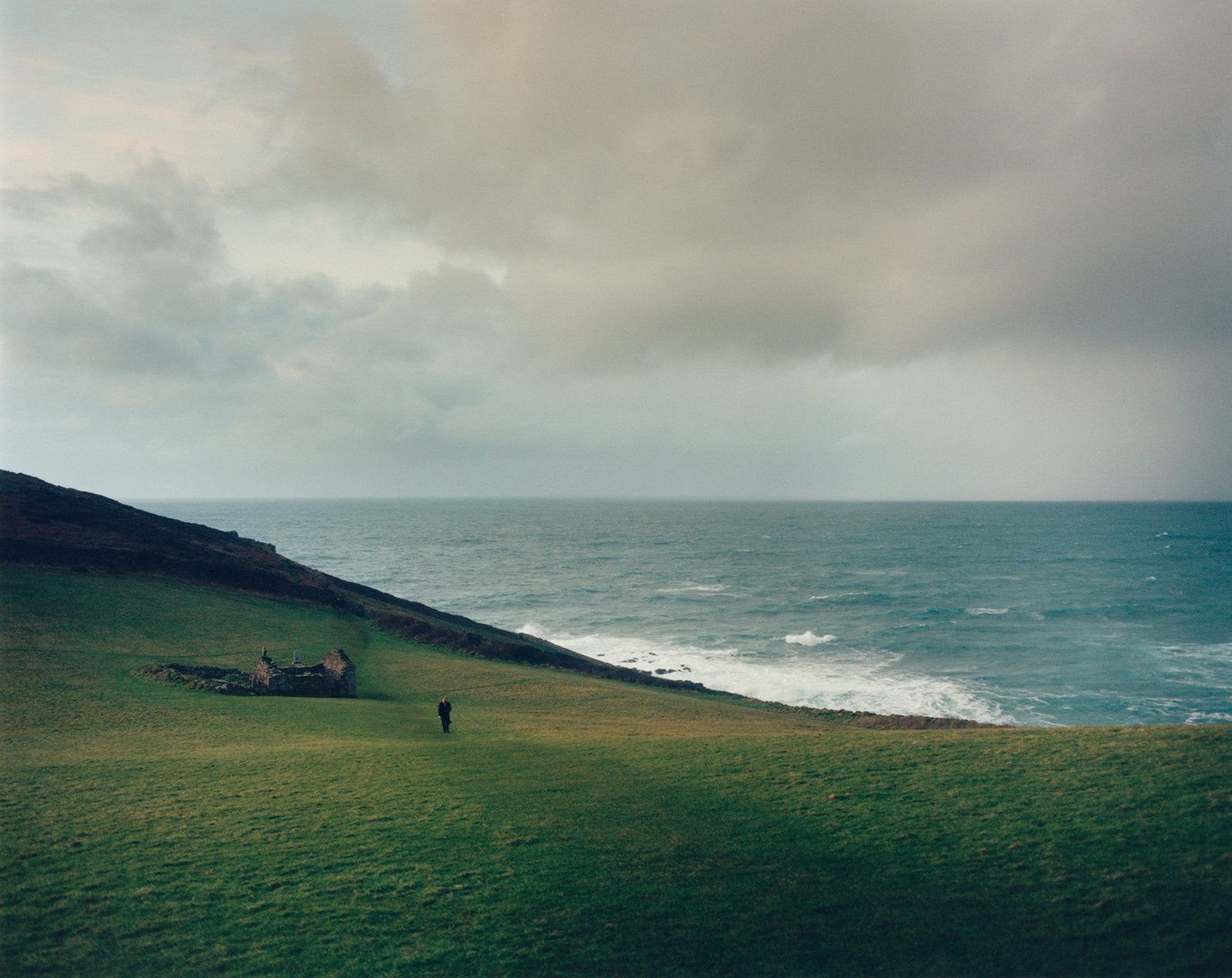
The magic, he adds, comes down to “just the simple nature of leaving your house to take a picture, and the sheer simplicity and openness of that. You’re not bringing anything to anything.” He pauses, handling his words carefully. “You’re kind of just ... I hate to say blowing around in the wind, because that would be cheesy as hell. But it’s probably not a million miles away from that idea.”
The British Isles by Jamie Hawkesworth is on show at Huxley-Parlour in London until 13 September 2024.


